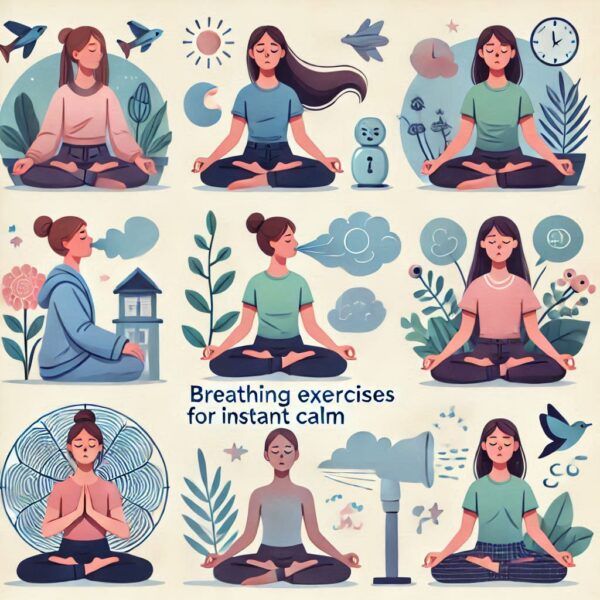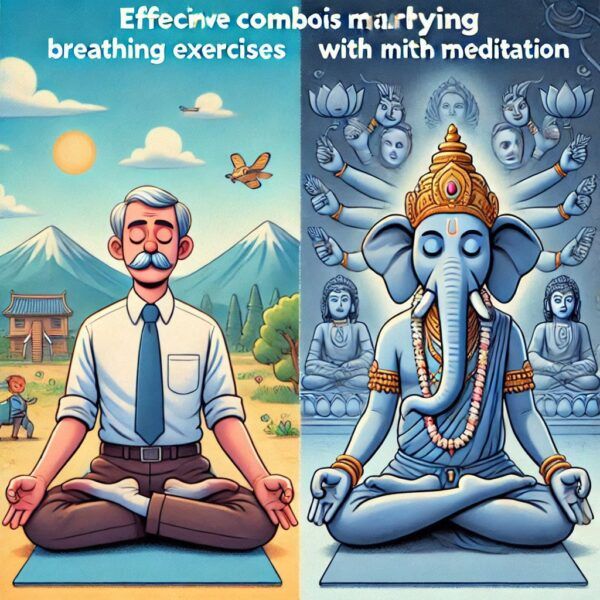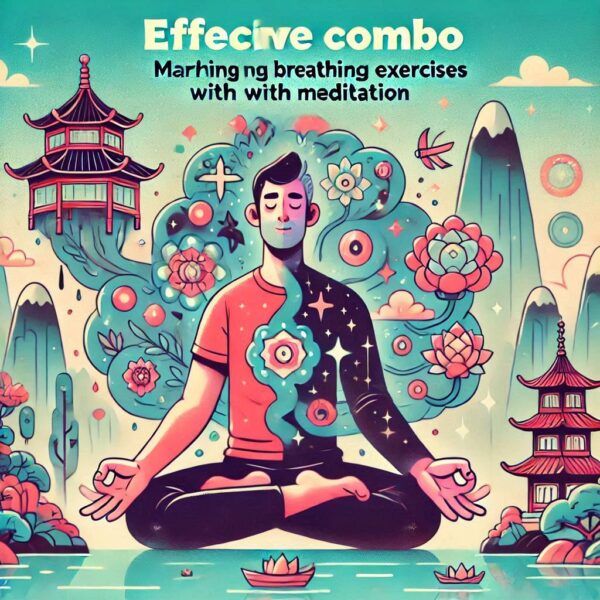
Many of us experience stress in our daily lives, sometimes so intensely that the simple act of breathing can become shallow and rapid, triggering a cycle of stress responses in our bodies. Understanding how our bodies respond to stress can be the first step in breaking this cycle.

When we’re stressed, our bodies activate the ‘fight or flight’ response. This leads to shallow, quick breathing patterns, which signal our brains that we’re under threat. It’s a survival mechanism, but it can keep us in a constant state of alert, which isn’t helpful for everyday stress.
Recent research has shown that deep, controlled breathing can do wonders in reversing this stress response. By practicing deep breathing, we activate the parasympathetic nervous system, often called the ‘rest and digest’ system, which helps calm our bodies down. This physiological transformation can lead to reduced heart rates and lower blood pressure, promoting a sense of calm and relaxation.
What’s really exciting is the evidence building around the benefits of these techniques. Recent studies suggest that regularly practicing deep breathing can significantly reduce levels of the stress hormone cortisol in the body. Additionally, it might even boost the immune system.
Setting some time aside to deeply understand these mechanisms and navigate their benefits can offer a profound tool for managing stress. It’s about rewiring our built-in responses to align more closely with the calm state we desire. Knowing the science behind it not only deepens our practice but also boosts our commitment to it.
Types of Breathing Exercises For Instant Calm

Once the science behind breathing is clear, it’s easier to appreciate the wide array of techniques available for calming the mind and body. These strategies can be adapted to fit different situations, offering immediate relief when needed.
Deep breathing is the most straightforward and accessible technique. It involves inhaling deeply through the nose, allowing the belly to expand, and exhaling slowly, longer than the inhalation. This method increases oxygen intake and promotes a soothing effect on the nervous system, making it a quick go-to for many.
The 4-7-8 Breathing Technique is another popular exercise. It involves inhaling quietly through the nose for four counts, holding the breath for seven counts, and exhaling through the mouth for eight counts. This pattern not only helps to slow the heart rate but also has a meditative quality, which can be especially beneficial during moments of heightened anxiety.
Alternate Nostril Breathing, known in yoga as Nadi Shodhana, is great for emotional balance. It requires alternating the breath between nostrils using the thumb and ring finger, creating a rhythm that helps center the mind and balance the left and right hemispheres of the brain.
Exploring these different styles can be quite rewarding. They each have their unique flavors and benefits, so experimenting can help discover which technique best suits the personality and lifestyle. Whether it’s the simplicity of deep breathing or the structured rhythm of the 4-7-8 method, finding a preferred practice is key to making it a regular part of managing stress.
Integration with Other Quick Relaxation Strategies

Breathing exercises can be incredibly powerful on their own, but their effectiveness can be enhanced even further when combined with other quick relaxation techniques. Blending approaches not only amplifies their calming effects but also creates a more comprehensive strategy to manage stress.
Pairing breathing exercises with progressive muscle relaxation can elevate stress relief to another level. By focusing on tensing and then releasing each muscle group, this technique works wonders at eliminating physical tension. Adding deep breathing to the mix ensures that the mind is equally relaxed alongside the body, fostering a full-body sense of peace.
Another effective combo is marrying breathing exercises with meditation. The rhythmic nature of breathing can serve as a perfect anchor point during meditation, helping the mind to stay focused and centered. This enhances the meditative experience, making it easier to slip into a deeper state of relaxation even in noisy or distracting environments.
Visualization techniques can also benefit from the steady rhythm of breath work. Imagining a serene scene or outcome becomes more vivid and potent when guided by controlled, deliberate breathing patterns, which can help in cementing positive imagery into the mind.
Experimenting with these combinations in different settings allows for a personalized approach to stress management that’s as flexible as one’s needs. Flexibility ensures that anyone can incorporate these practices throughout the day, creating little pockets of calm even amidst the busiest schedules.
Mastering Stress Management Anytime, Anywhere

Breathing exercises and relaxation techniques aren’t confined to yoga studios or therapy sessions. They’re effective tools designed for real-life situations, where stress can strike without warning. Incorporating these tools into everyday activities can significantly boost one’s resilience to stress.
In high-pressure environments, whether it’s a hectic workplace or a crowded subway, these exercises can be a lifesaver. Deep breathing, for example, can be done discreetly at a desk or while standing in line. All it takes is a few minutes and a little focus to regain a sense of calm.
To practice relaxation techniques in public, subtlety can be key. Techniques like the 4-7-8 breathing method require no props or noticeable movements, making them perfect for on-the-go stress management. They offer private moments of calm that others won’t even notice.
Overcoming barriers to these practices often involves a mindset shift. Viewing these moments as opportunities rather than interruptions can make it easier to fit stress management into a busy day. Remembering that these exercises are there to serve as a respite amidst daily chaos can help encourage more frequent practice.
Ultimately, the freedom to access these techniques anywhere means stress relief is always within reach. Building a habit of practicing them regularly will not only combat immediate stress but also build a foundation for long-term emotional resilience.
Practical Tips For Consistent Practice

Consistency is crucial when it comes to mastering breathing exercises and other relaxation techniques. Establishing a routine, even if it’s just a few minutes each day, can ensure these practices become second nature.
One effective way to keep up with these exercises is setting reminders throughout the day to pause and breathe. Use phone alarms or sticky notes as gentle nudges to dedicate time for a quick session of deep breathing or meditation, especially during predictable stress points, like before important meetings or after a long commute.
Creating short routines that incorporate multiple techniques can also enhance consistency. For instance, start with a one-minute deep breathing session, transition into a brief progressive muscle relaxation, and finish with a quick visualization exercise. This variety keeps the practice engaging and can address different facets of stress relief.
Another useful tip is utilizing apps or guided sessions for structured practice. Many apps offer quick, on-demand exercises and can be a great way to stay on track when motivation wanes. They can also introduce new techniques, keeping the practice fresh and exciting.
It’s also helpful to find a community or support group, whether in person or online. Sharing experiences and learning from others can provide motivation and accountability, making it easier to maintain regular practice.
Embodying these tips will gradually weave relaxation exercises into daily life, transforming them from tasks into cherished rituals that support overall well-being and stress management.
Benefits Beyond Immediate Calm and Relaxation

Breathing exercises offer more than just a quick respite from stress. With regular practice, these techniques can bring about profound long-term benefits for mental and physical health.
Consistent use of breathing exercises can lead to a decrease in overall anxiety and stress levels, promoting a balanced emotional state. As stress is managed more effectively, the body naturally finds itself in a healthier, more adaptable state.
The impact of these practices extends to focus and productivity. Regularly incorporating relaxation techniques into your day sharpens mental clarity, allowing you to tackle tasks with more efficiency and presence of mind. This can result in a more fulfilling work-life balance and increased satisfaction in day-to-day activities.
Including breathing exercises in your lifestyle fosters an overall sense of wellness and resilience. These practices help build coping mechanisms that prepare you for unexpected stressors, acting as a buffer against life’s challenging moments.
Ultimately, the ongoing practice of these exercises nurtures a profound connection between the mind and body. It enhances self-awareness, encouraging a mindful approach to life that ensures your mental fortress is fortified against stress’s toll, leading to a more peaceful and harmonious existence.

